1. A day in each fortnight of a calendar is
allotted by Scripture writers to a Deity based on solar
and lunar effects and that allotted to ‘Shri Ganesh’ is ‘chaturthi’
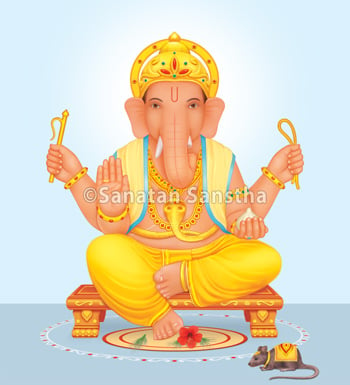
shriganapati
‘Based on astrology and the Religious Scriptures the sun represents cosmic energy (pranshakti) and the moon, mental energy. Tithis (dates as per Hindu lunar calendar) are determined by the sun and moon. Their movement creates different angles. On amavasya (no moon day) the moon enters the sun house and on pournima (full moon day) they face each other at an angle of 180 degrees. On ashtami they remain midway. Based on the effects of the sun and moon Scripture writers have decided the Deity for every date of the fortnight.
So chaturthi (the fourth day of the fortnight) is allotted to ‘Shri Ganesh’ because He is the remover of obstacles. Shri Ganesh and Shri Saraswati are both Deities who endow intellect as described in Holy texts, yet the missions of both of them are different. Intellect and knowledge grow with the grace of Shri Ganesh and with worship of Shri Saraswati the knowledge so gained can be expressed verbally. That is why She is called ‘Vakvilasini’ (vak means word).
2. Different Incarnations of Shri Ganesh and Their missions
| Name of the incarnation | Form of the incarnation | Mission of the incarnation |
| 1. Vakratund | Radiant, bearing a trunk, piercing eyes, and is smeared with sindur all over. | When Deity Brahma faced obstacles in creation of the universe, He worshiped this form after which Vakratund manifested and accomplished the mission of creation of the universe successfully. |
| 2. Kapil Chintamani | Sitting on a lion, adorning Divine ornaments, four armed, He holds a lotus, a modak (sweetmeat ) and weapons – mace, axe etc in His hands. Since He emerged from the fire sacrifice performed by Sage Kapil, He is named Kapil. Incidentally His complexion is brown like a monkey (kapil). If this form is observed minutely you can see a cow (kapila) in it. Milk, curd, urine of the cow are all beneficial to man. Curd which represents the intellect and ghee which represents knowledge endows man with intellect and strength. Hence the name Kapil is appropriate for Him. | Being the son of the King of the Dravid region, Abhijit and his queen Gunavati, He annihilated the demon Gana. He then returned the precious gem ‘Chintamani’ to Sage Kapil. The Sage then put it around the neck of Ganesh and named Him Chintamani. |
| 3. Gajanan | Son of Bhagwan Shiva and Parvati He was born on Bhadrapad shuddha chaturthi. As the head of Gajasur was attached to His trunk He was named ‘Gajanan’. He is dressed in yellow clothes, wears a crown, earrings and other Divine ornaments and has four arms. The Divine Energies Siddhi and Buddhi accompany Him. | As Sindurasur was not destined to die with a weapon He annihilated the demon simply by massaging and reducing Him to a powder. Then He applied that powder (sindur) to His body and gradually began liking it. |
| 4. Vighneshwar | He was son of King Varenya and Pushpika and was brought up in the ashram of Sage Parshav. His vehicle is the mouse. Adorning the head of an elephant He has four arms and a Divine complexion. He holds the goad, noose, axe (as weapons) and a lotus in His hands. | He compelled demon Vighnasur to surrender unto Him and in response to the prayer of the demon assumed the name ‘Vighnaraj’. |
| 5. Ballaleshwar | He is colossal like Bheem (the most powerful Pandav) with 10 arms, indeed a fearsome form. He holds a noose, goad, axe, lotus and discus in the right sided hands and a mace, sword, trident, tomar (arrow shaped weapon) and a pellet drum (damru) in the left sided hands. | The demon Shankhasur and his brother Kamalasur destroyed Holy texts similar to the Vedas. Manifesting in the form of the Brahman (priest) Ballal, Gajanan uplifted Vedic literature. Later in the ten armed form He annihilated Kamalasur and set up the region of Mayureshwar. |
| 6. Dhumketu | He is the son of Madhav and Dumara. With a red Divine complexion, four arms and three eyes He is dressed in white, adorns a crown and earrings. He holds a lotus, axe, modak and a precious necklace in His hands. He has a trunk, one tooth and large ears like sifting pans. | He annihilated the demon Dhum by opening His mouth wide and swallowing the demon along with his soldiers. This is how He got the name Dhumketu. |
| 7. Ganesh | When Deity Shankar chanted a monosyllabalic mantra to be able to annihilate the demon Tripurasur, many Deities manifested from His mouth. Ganesh was one of them. He has a yellow complexion, ten arms and adorns precious jewels. | Pleased with Deity Shiva He gave Him the strength to annihilate demon Tripurasur |
Till date Ganesh has been created and undergone dissolution several times. Every time Shri Ganesh has assumed an Incarnation to accomplish a particular mission. The biography of these Incarnations is different or appears different but it is the truth because all this has been described by Sage Vyas. If Ganesh is worshiped with faith then one receives the benefit even today.

 Maghi Shri Ganesh Jayanti 2025
Maghi Shri Ganesh Jayanti 2025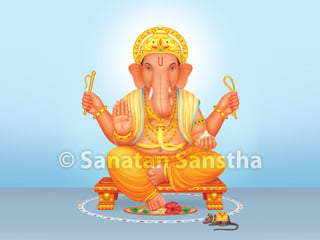 Sankashtnashan Stotra
Sankashtnashan Stotra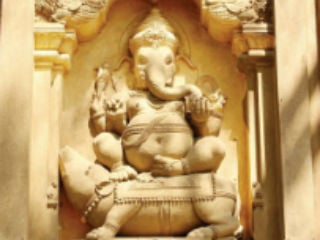 Signs of ancient Hindu culture left behind in foreign lands
Signs of ancient Hindu culture left behind in foreign lands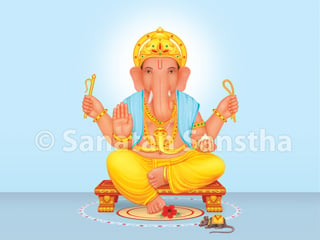 Some mantras to be recited when worshipping Shri Ganesh with specific objectives
Some mantras to be recited when worshipping Shri Ganesh with specific objectives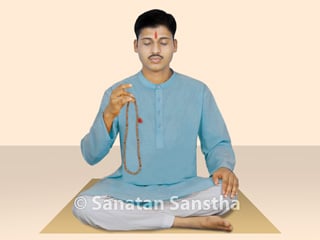 Chants of Shri Ganesh
Chants of Shri Ganesh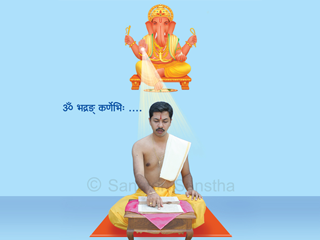 Shri Ganapati Atharvashirsham
Shri Ganapati Atharvashirsham